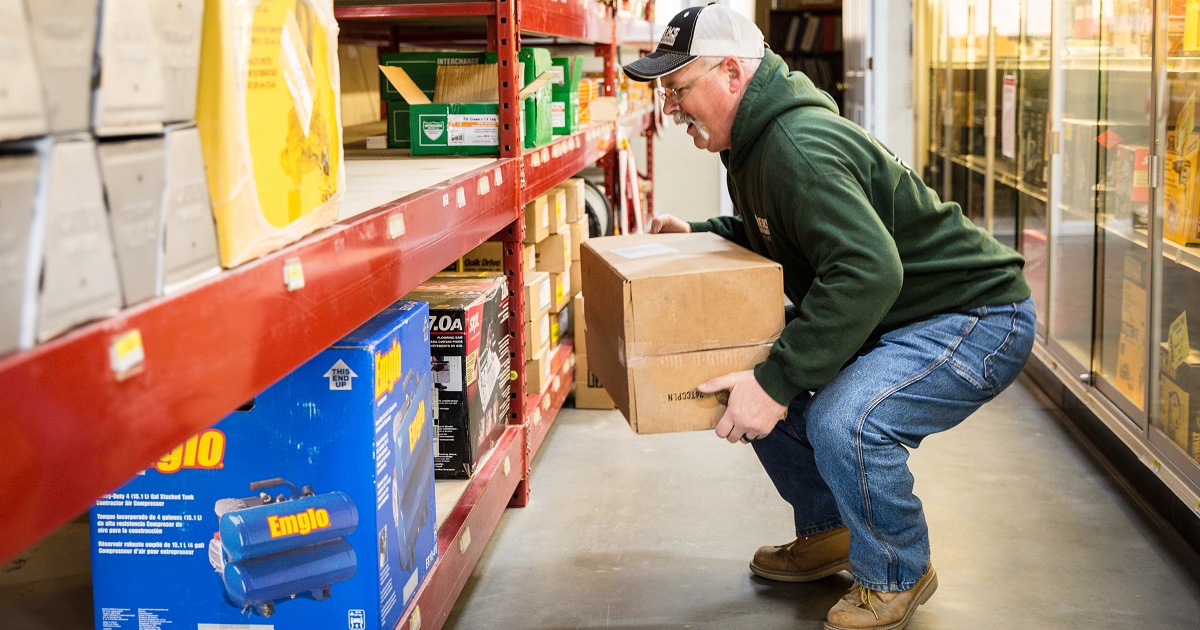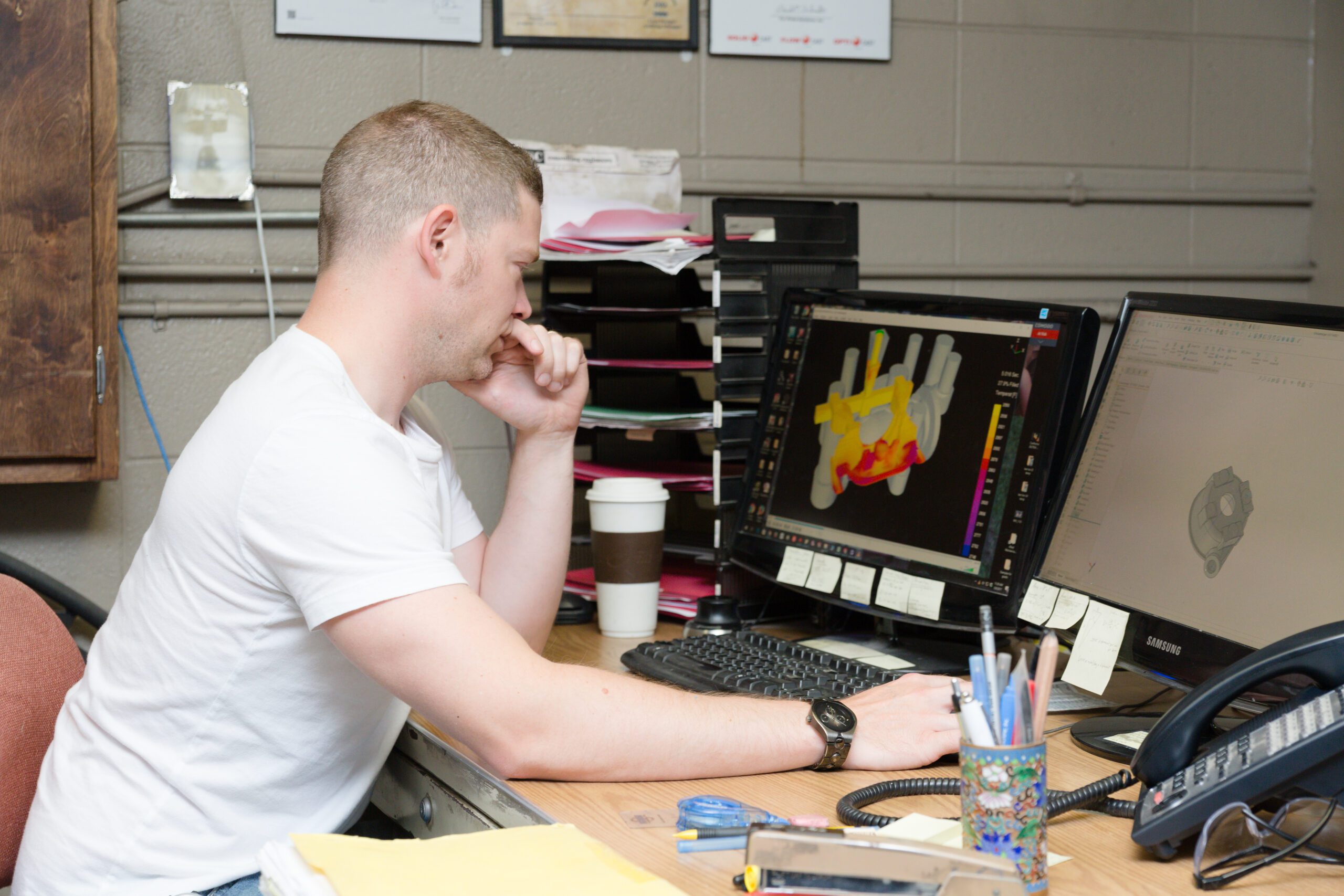“Lift with your legs.” We’ve all heard this adage to avoid straining your back and prevent overexertion injuries. But the data suggests we’re not all following it: Overexertion is the leading cause of workplace injury, making up 34% of lost-time injuries.
According to the National Safety Council, the causes of most of these injuries fall into a few categories:
- Directing excessive physical effort at an object (lifting, pulling, carrying, throwing)
- Repetitive motion (typing, using tools or instruments)
- Free bodily motion (bending, crawling, twisting, kneeling)
The types of movements that can lead to strains and sprains often seem harmless – but the frequency of these injuries shows that many employees are underestimating the risk or are simply unaware of safety protocols that can prevent them.

A problem spanning industries
Because a variety of activities can lead to strain and sprain injuries, this risk is present in almost all industries. The industries and occupations with the highest rate of overexertion injuries are transportation and warehousing, utilities, installation and maintenance, and healthcare-related fields.
The reality is that almost any employee can be tasked with lifting something within the scope of their job – whether it’s a box of product or a medical patient. Even working at a computer all day carries its own overexertion risks due to the repetitive motion involved.
In this post, we’ll cover the three categories of overexertion injuries, common risks and how you can prevent overexertion injuries in your workplace.

Overexertion injuries from excessive physical effort
Nearly half of overexertion injuries occur in the trunk of the body, primarily the back. Another large portion occur in the shoulder. These injuries often result from a single, intensive use of force while trying to lift, pull or throw an object.
Safe lifting
Using unsafe or careless lifting techniques can put you at risk for a serious back injury.
Make sure your employees know the basic best practices for lifting:
- Stabilize your body by keeping your feet shoulder width apart.
- Squat and let your leg muscles do the heavy lifting. Avoid bending and relying on your back muscles.
- Avoid twisting while lifting.
- Get help and team-lift heavy loads.
- When possible, use tools or equipment for heavy lifts. Some examples: skid steer, loader or dolly.
In high-risk industries like warehousing, employees will need additional training to safely move loads throughout the day. The traditional approach to loading and unloading pallets can often pose a risk of unsafe lifting. For example, pallets are only six inches high and heavy product is often in the shortest stacks. Consider process improvements like raising the bottom level of racking so employees don’t have to stoop to pick up a heavy load.
Let your employees know that you don’t expect them to overexert themselves on a heavy lift. If they’re concerned about their ability to safely lift a heavy load, they should feel comfortable stopping work and talking to a supervisor.
Prevent injuries with regular stretching
Have you ever run, picked up something heavy, or even thrown a ball and felt a twinge of pain? When your muscles aren’t prepared, it doesn’t take much to strain them. Stretching gives your body a chance to warm up and reduces your risk of muscle injury.
One Missouri Employers Mutual policyholder reduced this risk by starting a stretching program on a specific schedule. Employees in this manufacturing facility know that it’s time for a stretch break at 7 a.m., 9:30 a.m., and after lunch.
Overexertion injuries from repetitive motion
Many strains and sprains result from repetitive motion – doing the same job day after day, sometimes for years. While stretch breaks and proper form can reduce this risk, sometimes the most effective solution is to change or eliminate the motion entirely.
Consider process improvements
In some situations, a process improvement can be all it takes to reduce exposure to repetitive motion and strains. Perhaps the job can be performed from a seated work station instead of requiring the employee to bend over. Alternatively, if the employee is repeatedly bending over to pick up materials, maybe the materials can be positioned on a nearby platform instead of the ground.
Invest in equipment to prevent strains and sprains
You should also consider equipment options that could alleviate your team’s most harmful repetitive motions. An up-front investment in new equipment pays for itself quickly when you consider that an employee with an overexertion injury misses 13 days of work on average. This lost productivity plus the impact that a work comp claim can have on your insurance premium makes doing everything you can to prevent injuries a no-brainer.
If you, like most business owners, don’t have an unlimited budget for new equipment, get creative. Sometimes you don’t have to make a major investment to get major results. Here’s proof: Skweeky Kleen Windows is a family-owned window cleaning business with five employees. Craning their necks all day while washing high windows was taking a toll on employees’ bodies. The team started using prism glasses, also known as belay glasses in the rock-climbing industry, eliminating this repetitive and straining movement from their work day. Similar glasses are about $50 a pair – a small price to avoid neck and upper back strain.
Overexertion injuries from free bodily motion
Motions such as twisting and kneeling may seem natural, but if done repetitively, abruptly or with improper form, they can cause overexertion injuries.
Ergonomics for desk jobs
Employees in business and professional services might not be moving heavy objects all day, but they’re also at risk for strains and sprains. Sitting at a desk for seven or eight hours a day can be harmful to the body, especially if the work station is not set up ergonomically.
Sitting at a desk for seven or eight hours a day can be harmful to the body, especially if the work station is not set up ergonomically. Tweet this. >
Prevent strain by making sure each employee’s monitor, keyboard and mouse are positioned correctly. The proper desk setup depends on an employee’s stature, so conduct regular evaluations for new employees. Provide adjustable chairs with lumbar support, as well as a foot rest, document holder or any other special equipment your employee needs.
Teach employees about the 20/20/20 Rule: Every 20 minutes, look at an object 20 feet or more away for 20 seconds. Your eyes need the full 20 seconds to relax, keeping their tissues flexible and oxygenated. It’s a great opportunity to get up, stretch and get a drink of water. Your ergonomics training should also address good posture for long-term sitting.

Ergonomics and stretching for drivers
Long-haul truckers and others in the transportation industry face similar risks as those with desk jobs. They spend many hours a day seated in the same position. However, drivers are exposed to additional risks when entering and exiting vehicles, or climbing on vehicles to work with loads or external equipment.
Addressing these risks is part of a successful driver safety program. Train your drivers to always use three-point contact when climbing into or out of a truck’s cab or trailer. For long-haul drivers, implement guidelines for stopping to stretch and let them know that management supports taking breaks. Provide plenty of information to all drivers about how to eat healthily and stay hydrated on the road.
Slips and trips can lead to strains and sprains
Slips, trips and falls are leading causes of workplace injuries in terms of frequency and severity. Falls can result in traumatic brain injuries – in particular, falls from heights can lead to catastrophic injuries. But what about slips and trips that don’t result in a fall? Often, people who slip on a wet floor or trip over a misplaced tool make drastic movements to keep from falling all the way down. They twist, jerk or catch themselves with their arms. These interventions can result in strain injuries to the shoulders, back and neck.
Be proactive to prevent overexertion injuries
It can be easy to focus on eliminating hazards with catastrophic consequences, leaving strains, sprains and other overexertion injuries on the back burner. As Dr. Matt Jeffs said on the WorkSAFE Podcast, “If it bleeds, it leads.”
Of course, safety leaders should do everything they can to prevent devastating injuries like traumatic brain injuries and loss of limbs. But it’s also important to address ergonomic problems that can lead to strain and sprain injuries. The severity of overexertion injuries may be lower than average, but their high frequency means they’re still a serious concern for business owners.
Want to learn more about preventing overexertion injuries? Listen to our interview with Dr. Matt Jeffs, certified rehab ergonomist, on the WorkSAFE Podcast.
Listen to Identify and Prevent Injuries with Workplace Ergonomics. >